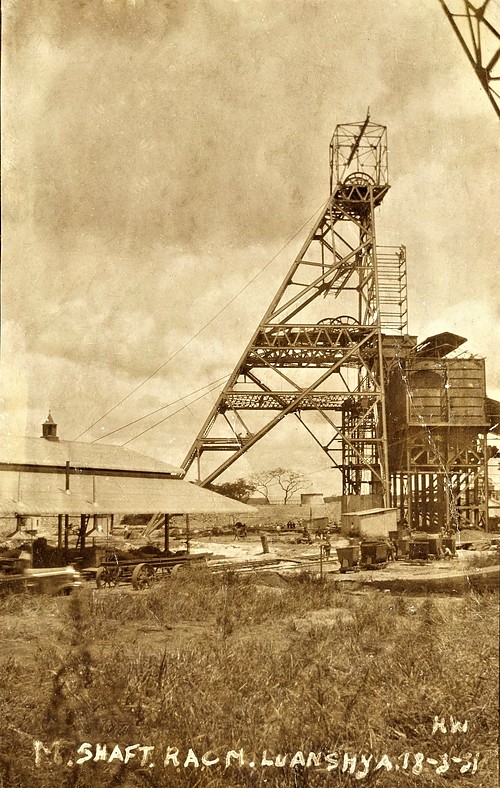THE MYTH OF THE LUANSHYA RIVER SNAKE: “SANGUNI”/”FUNKWE”
Myths and legends are part of every society, these stories are passed on from generation to generation to try and offer an explanation for phenomenon which seems supernatural or whose cause cannot be fully comprehended. An example of such a myth is the myth of the Luanshya River Snake called “Sanguni” or “Funkwe”.
In around 1927, when work began at the Roan Antelope Mine in Luanshya, stories began to spread about a legendary underground creature that lived in the Luanshya River. It was said that this creature had a humanlike head with a body that looked like a combination of a snake and a fish. The Lamba people who were the inhabitants of the area in which the mine was located told tales of how this mythical snake would swim along the Luanshya River into mine shafts causing flooding, cave-ins, diseases and spewing toxic gases which killed people. Every time a miner got sick or had an accident, it was believed that this mythical snake had claimed another victim.
Stories about “Sanguni” began to circulate widely in the Lamba community. Mine workers began to desert the mine and any potential recruits refused to work in the mine because of the fear that they would be the next victims of the Luanshya river snake. Because of these stories, the mine management had difficulties in persuading Africans to work.
Faced with a serious problem of a lack of workers, the mine management looked for a way to calm the fears of their workers. In 1928, the mine organized an exorcism of the mythical snake in order to reassure African workers who had refused to enter the mine. Chirupula Stephenson the former Native Administrator organized the local Lamba elders to travel to Roan Antelope to conduct the exorcism. The aim of this exorcism was to ask the Luanshya river snake to move away from the mine.
During the ceremony, the Lamba elders gathered some items which they would use to perform the exorcism ritual. Some of these items included; white flour, a white rooster, a white handkerchief and a string of white beads. These items were taken to the site were a miner had drown. A thatched cone shaped hut was erected at the particular spot to serve as a shrine. Entry points were created on each side of the hut.
As the ceremony began, a senior member among the Lamba elders approached the shrine and offered traditional prayers. The elders them proceeded to conduct a ceremony using some of the items which they had carried with them. Once the ceremony was over , the Lamba elders proclaimed that the snake had relocated and that it would not bother anyone anymore.
As with most myths, there is not much evidence to actually prove that such a snake really did exist or that this exorcism had any impact on reducing the mortality rate at the mine. In the eyes of most skeptics, it was unlikely that this mythical creature caused these calamities at the mine. To the skeptics, the whole story was spread by the Lamba elders in order to give people an explanation for the calamities at the mine.
It is also believed that the mine management only tolerated the idea of the exorcism of the mythical snake in order to ensure that workers went back to the mine. They saw the ceremony as a cheap way of squashing the fear in the Africans so that the mine could avoid spending money to find solutions that would improve the health conditions at the mine and prevent diseases like malaria, blackwater fever and typhus.
Research has shown that malaria was actually the main cause of deaths among miners at Roan Antelope Mine in the 1920s. This problem was solved when a malaria control campaign was introduced and the swamps of the Luanshya River were drained. Having dealt with the swamps which were the breeding ground for mosquitoes, the deaths reduced.
However, even with this explanation that the causes of death at Roan Antelope Mine were as a result of unhealthy ecology and poor living and working conditions, some still hold on to the belief that there was a death causing mythical snake that lived in Luanshya River and it merely relocated to another body of water. This legend stills remains a part of the mythology of the Lamba people.
(By Zambian Footprints)
